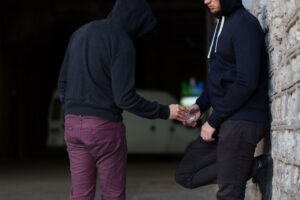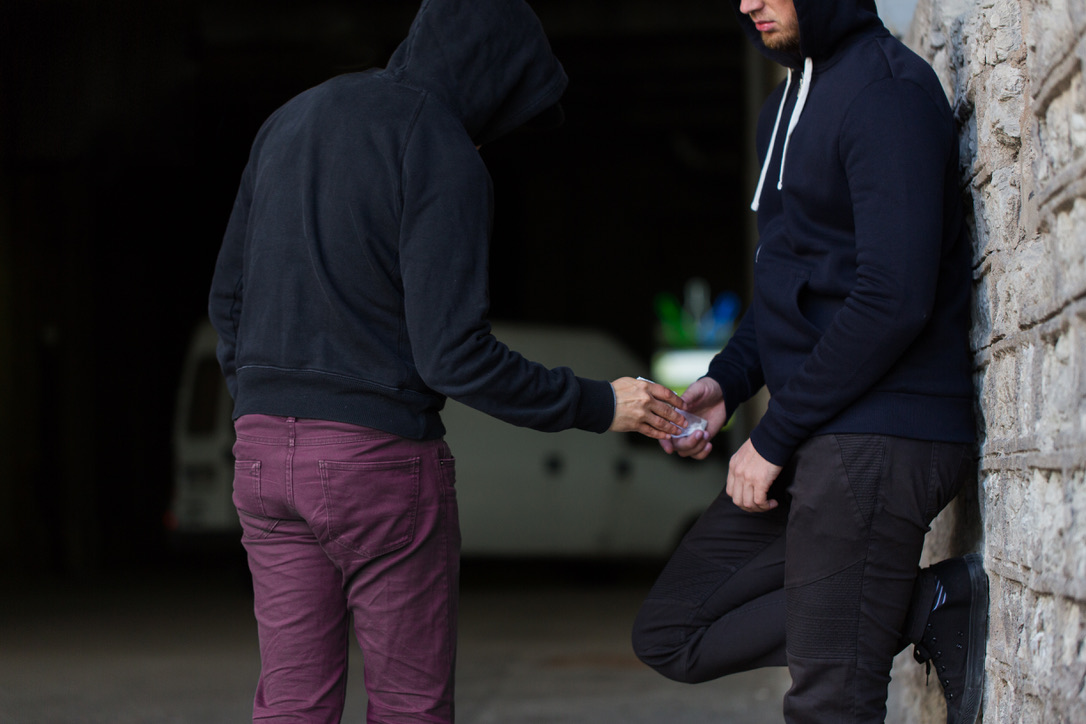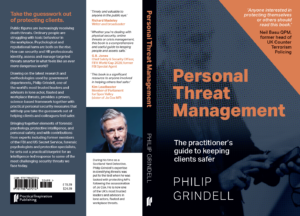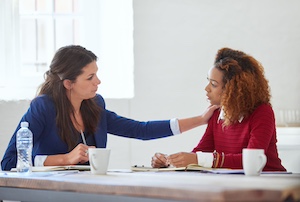You may have noticed it is getting darker earlier, and before long, it may be dark before you even leave work. Some people will begin to feel less safe as the darkness draws in. At the same time, predators may be preparing to attack.
During my three decades as a detective in London’s Metropolitan Police, I became acutely aware that suggesting that crime increases because it gets dark early oversimplifies the issues. Crime, including acquisitive crime such as robbery, thefts, and burglaries, is driven by various factors, with the cost of living being a key element.
Why do we feel less safe walking in the dark?
However, many people feel less safe in the dark despite the statistics. It may be because, as children, we were warned about the monsters that came out at night (maybe that was just me 🤔) or because when we watch TV or films, bad things happen at night; I am sure there is a psychologist who has published some interesting research into the subject.
As a former soldier who operated covertly, the darkness was my friend, and it was often when we went to work, so on a personal level, I am comfortable in the dark. However, you may have had very different experiences.
As the nights draw in, it is very common to feel less safe when you walk to your car, whether parked on the street or in a car park, or when you get off the train or leave the underground in London and begin to walk home or leave a social event and head home.
Research conducted by Neighbourhood Watch in 2022 (1) suggested that four out of five people feel less safe when it’s dark and were 12 times more likely to avoid the areas they frequented than during daylight hours.
Do women feel less safe in the dark than men?
Demographics played a significant role in how safe people feel, with 84% of women feeling more unsafe when out and about alone compared with 44% of men. The LGBT community also felt less safe, with gay men far more concerned about their personal safety than straight men.
The research found that, as a result, people commonly change their behaviour to improve their perceived levels of safety when out in public in the dark.

How can I feel safer walking home in the dark?
So, what can we all do to feel safer as the nights draw in?
Be prepared:
Two critical factors influence how safe we are. The first one is to ‘be prepared’, which all Scouts will be familiar with as this is their motto (2). If you know that your car is parked in a dark spot, and let’s assume there is nowhere else to park, being prepared may include having your car keys in your hand before you leave work or having a personal alarm. If your car is parked in a work car park, it is worth asking whether the lighting in the car park can be improved or whether a security team member could be present at the end of the working day when you and your colleagues are leaving.
Being prepared may include speaking with colleagues, asking whether someone would escort you to your car, approaching your boss, and asking whether you might start and leave work a bit earlier.
Be aware:
The second critical factor is being situationally aware. Situational awareness is a skill that can be learned, and this is a crash course in some of the basics. In simple terms, it is being aware of your situation.
Predators rely on the weak and vulnerable, whether in the animal kingdom or humans. Street robbers can recognise a vulnerable potential victim instinctively. The key is not to look like one.
You look vulnerable when you walk down the street using your mobile phone’s map feature to find your desired location.
The reason is that you are communicating the following:
• You don’t know where you are going.
• You don’t know where you are, so once they have stolen your phone, you won’t be able to contact the police immediately and will probably not know the exact location of the incident. This fact makes it more difficult for the police to investigate and catch the criminals.
• You are not focused on your surroundings and are not situationally aware.
• You have, at the very least, a phone to steal.
Suppose you stand outside of a London Underground station as it gets dark. Many people leaving will open their phones to see whether anyone has been unable to live without contacting them over the short journey they have travelled underground. In doing so, the phone lights up their faces, giving the robbers hanging near the exit a clear look at their potential prey. They make an immediate assessment of you as a victim. They can tell whether you are a male or a female, young or old and whether they perceive you as someone who will fight back, alone and vulnerable. They decide if you are prey!

If you then open the map feature, it’s even better.
How to be situationally aware in the dark?
What about calling a friend or putting your headphones on to listen to music to comfort you as you walk home in the dark?
Now, you have shut down one of your senses, your hearing, so now you won’t hear the attack coming, and you won’t have seen the attackers, so you won’t be able to give a description.
Being situationally aware means thinking differently from the average person who wanders unquestioningly through their day, oblivious to the threats around them.
In his excellent book, retired US Special Forces expert Dan Schilling, described situational awareness as “knowing where I am and what’s around me, what’s going on in my surroundings and my place in them.” (3) You can listen to Dan talk about this on The Defuse Podcast (4)
Being situational aware does not mean becoming a Ninja or being obsessed with the idea that an attack is around every corner; it is about being present and thinking ahead. It is about reducing risk.
Being situationally aware is a critical skill everyone should be encouraged to develop. It is essential to recognise risks and changes to the environment.
Horizon scanning
When out and about, a good practice is to ‘horizon scan’; this ensures you are unaware of what is happening ahead, such as a large crowd, an angry mob, a fight, or a drunk.
Commenting on what you see is an interesting exercise to practice while walking or driving. This is a practice that all police officers must do when being taught to drive at high speeds and must do when involved in a pursuit. How difficult it can be and how much information you overlook will surprise you.
As you walk along the street, it will sound something like this:
“Walking towards the centre, a junction 100 meters ahead, two men standing in the doorway smoking, a woman walking towards me with a pram blocking the footpath. At the junction, there are traffic lights. The pedestrian lights are currently on red, with traffic flowing. A car is parked on the side of the road with a person sitting in the front seat”.
It may not sound like much, but you have identified several potential hazards.
Will you have to walk in the road to let the women with the pram pass? Why are the two men standing in the doorway? Is the person in the parked car with them? Should you cross over to the opposite pavement? Is this a potential kidnap situation?
Be aware of cycles, mopeds and scooters
In some cities, moped, scooter and cycle robberies are increasingly common. These robberies happen as the thief flies past you and grabs your phone or bag as they do, stealing your possessions and making off before you have an opportunity to react. A good tactic is to walk towards the oncoming traffic so that you can see any approaching vehicles. This advice, of course, assumes that the moped or bike rider is following the direction of traffic.
Secondly, walk as far away from the road as possible with any bags you are carrying on the building line side of the footpath. That way, if they want to target you, they not only have to mount the pavement, which the thief will do, but they must come close to the building line, which increases the risk to them; you will see them coming and be better able to avoid their attack. That is situational awareness in action.
These are just a few tips to get you thinking because thinking ahead is the key.
Dan Schilling provides an excellent four-step checklist: change your surroundings in four steps.
• Familiar and safe – eating in your favourite local restaurant.
• Unfamiliar and safe – eating in a hotel restaurant in a different city.
• Familiar and Unsafe- in a city you know well but where you or your client are clearly foreigners.
• Unfamiliar and Unsafe – in a bar late at night in a city known to be hostile on your first night of a trip. (3)
Your situational awareness may be different in each of these scenarios.
In the ‘familiar and safe’ example, you may be more relaxed, let your guard down, and miss something evident because you were not switched on. Equally, in the ‘unfamiliar and unsafe’ example, whilst your antenna may be on full alert, you may dismiss a threat as a local cultural practice or overly rely on local law enforcement, who may not be as reliable as those you are used to back home.
How to stay safe at a networking or business event?
Another concern may occur when attending a networking or other business event in the evening. Dan Schilling describes that this may fall into the ‘unfamiliar and safe’ category. In this case, being prepared and situational aware will be critical.
Be prepared by researching the venue and the route to and from a transport hub you plan to use. This may include pre-booking a taxi from a reputable company or arranging to travel with a colleague.
Any venue where alcohol and drugs are consumed adds another element of risk. It is a fact that where either or both are used, crime goes up. This may be because those drinking alcohol reduce their situational awareness or because the behaviour of some becomes more concerning, or with regards to drugs, because they are illegal, they automatically include criminal behaviour.
If you are buying and or consuming drugs, you are automatically making yourself vulnerable and less likely to report any incidents that occur because of that activity.

Being mindful of those around you, avoiding those who have consumed too much alcohol or appear to be under the influence of illegal drugs, is being situationally aware. Removing yourself from their presence is being prepared.
Below are the top tips we offer to ensure you are as safe as possible in the dark.
How to stay safe walking home in the dark?
1. Be prepared
Ensure you have your car keys in hand when leaving your workplace, social event or home. This will reduce the amount of time you are fumbling around in the dark (which could make you seem vulnerable). Invest in an alarm and ensure your phone has enough charge to make an emergency call if required.
2. Stay situationally aware:
Avoid checking your phone and listening to music whilst walking alone in the dark. Ensuring you use all of your senses to make sure your environment is safe.
3. Stick to well-lit, busy routes:
Use a path that is well-lit and well-used to maximise safety. Where possible, try to avoid shortcuts, dark alleys or quiet areas as these can make you vulnerable to threats.
4. Walk with confidence:
Projecting confidence can deter predators and make you look like less of a target. Keep a brisk pace, stand tall and ensure you are observing your surroundings to ensure no one is following you. Make eye contact with passersby as this will show you are aware of their presence.
5. Walk with a friend or share your route:
Where possible, try to walk with a friend or trusted person. When this is not possible, ensure you share your route and make someone aware of your estimated arrival time – so they know if they need to check up on you.
Are other people worried about walking home in the dark?
I can guarantee this Autumn that you will not be alone in being concerned about your safety. Others may feel the same, and plans are already in place to mitigate your fears. If no plans are in place, you could discuss how plans might be introduced.
Some of the tactics I have referred to in this article have been proven to work in some of the most hostile environments by government operatives. I feel confident that it is unlikely that we will be faced with that level of hostility this Autumn, and when you introduce the good habits discussed, you will not only feel safer, but you will also be safer.
References:
1. Research shows people avoid activities when it’s dark due to safety concerns | Neighbourhood Watch Network [Internet]. [cited 2024 Sep 4]. Available from: https://www.ourwatch.org.uk/news/research-shows-people-avoid-activities-when-its-dark-due-safety-concerns
2. Scout Motto – Wikipedia [Internet]. [cited 2024 Sep 4]. Available from: https://en.wikipedia.org/wiki/Scout_Motto
3. The Power of Awareness: And Other Secrets from the World’s Foremost Spies, Detectives, and Special Operators on How to Stay Safe and Save Your Life by Dan Schilling, Hardcover | Barnes & Noble® [Internet]. [cited 2024 May 30]. Available from:
https://www.barnesandnoble.com/w/the-power-of-awareness-dan-schilling/1137837298
4. The Defuse Global Security Podcast | Defuse Global [Internet]. [cited 2024 Sep 4]. Available from: https://www.defuseglobal.com/podcast/



